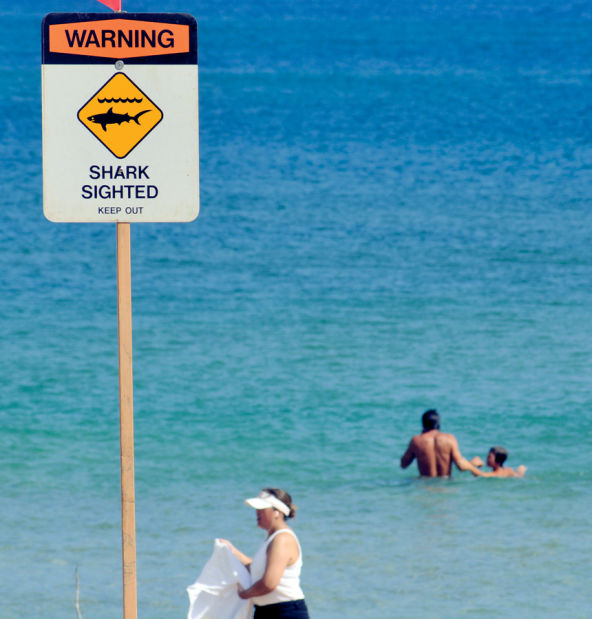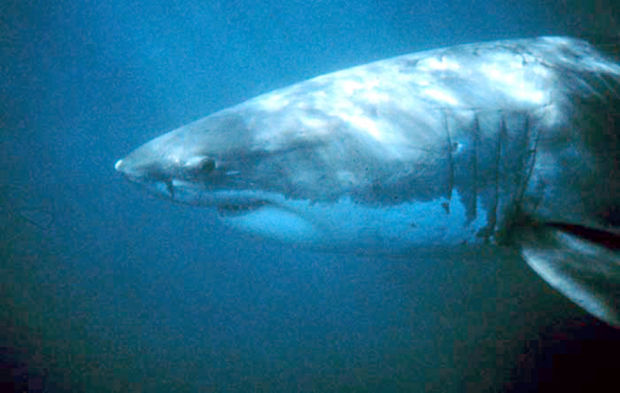LIHU‘E — A recent study in the Journal of Marine Biology sheds new light on the relatively rare but occasionally recorded presence of great white sharks in waters surrounding the Hawaiian Islands. “This study is valuable in that it provides
LIHU‘E — A recent study in the Journal of Marine Biology sheds new light on the relatively rare but occasionally recorded presence of great white sharks in waters surrounding the Hawaiian Islands.
“This study is valuable in that it provides a better understanding of the biology and behavior of white sharks, which is very useful for management purposes,” said William Aila, chair of the state Department of Land and Natural Resources. “White sharks were caught by pre-contact Hawaiians, and their teeth used in weapons and other implements. But in many ways they continue to mystify us today.”
The paper, “Occurrence of White Sharks in Hawaiian Waters,” was written by Kevin Weng of the UH Manoa’s School of Ocean and Earth Science and Technology, and Randy Honebrink of the DLNR Division of Aquatic Resources.
Satellite tracking studies have previously shown that Hawai‘i’s white sharks are migrants from population centers off California and Mexico. A relatively small proportion of those West Coast sharks migrate all the way to Hawai‘i, which is why they are so rarely seen.
The authors reviewed newspaper accounts of shark attacks, shark control program catch records, photos and videos from various sources, and satellite tracking data. Only data that could be confirmed as pertaining to white sharks was included in the analysis.
“We learned that white sharks occur in Hawai‘i across a broader part of the annual cycle than previously thought — we recorded observations from every month except November,” Weng said. “This is important for our understanding of white shark life history and population.”
Since all records of white sharks in Hawaiian waters are of individuals larger than 10 feet, 10 inches, and no juveniles have ever been reported, there is no evidence of white sharks being residents or pupping here.
Scientists have learned a great deal about the migratory patterns of white sharks in the Eastern Pacific since the advent of satellite tracking, but important questions remain.
“Our satellite tracking studies have been conducted in places where we can get very close to the animals — seal colonies — but this means that we may be sampling a subset of the population, and thus obtaining biased results,” Weng said. “It is possible that there are individuals that do not aggregate around seal colonies.”
Male and female white sharks have different migration patterns, Weng said.
“Males have been recorded in Hawai‘i from December through June, but females have been observed here all year round,” he said.
Female white shark visits to Hawai‘i may be related to a two-year reproductive cycle, in which they return to coastal aggregation sites off California and Mexico on alternating years. That leaves them with more time to spend in Hawai‘i, where warmer water temperatures may speed up fetal development.



